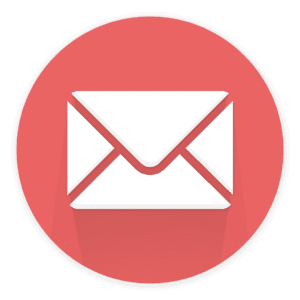As a business broker, getting leads is key to your success. Cold email outreach is a powerful way to attract potential clients. By sending out personalized emails, you can grab the attention of business owners looking to sell.
In this article, we’ll explore advanced cold email strategies for business brokers. You’ll learn how to write great subject lines and use analytics to improve your emails. We’ll also share tips on building targeted lists, handling objections, and following email marketing rules. By using these strategies, you can boost your cold email success and get more qualified leads.
Key Takeaways
- Discover the importance of cold emails for business brokers in lead generation
- Learn how to craft compelling subject lines that boost open rates
- Understand the key components of a great cold email
- Leverage personalization to increase engagement and response rates
- Explore best practices for timing your emails and sending effective follow-ups
- Gain insights into using analytics and A/B testing to refine your strategy
- Ensure compliance with email marketing regulations like GDPR and CAN-SPAM
Understanding Cold Emails: The Basics
Cold emails are key for business brokers to grow their client base and find new leads. In today’s market, knowing how to write good cold emails can really help you stand out.
A cold email is a message sent to someone you’ve never met before. You aim to introduce yourself, your services, and start a conversation. This could lead to a business relationship that benefits both parties.
What Are Cold Emails?
Cold emails are a way to reach out digitally to potential clients. You send a message that’s personalized to the person you’re targeting. Unlike spam, cold emails are specific and offer real value.
- A compelling subject line
- A personalized greeting
- A brief introduction of yourself and your business
- A clear value proposition
- A specific call-to-action (CTA)
- A professional signature
Importance for Business Brokers
For business brokers, cold emails are great for finding new clients. They let you reach out directly to potential sellers or buyers. This way, you can skip traditional marketing and talk straight to your audience.
Cold emailing allows us to connect with high-quality prospects who may not be actively seeking our services but could greatly benefit from them. It’s a proactive approach to growing our business.
Some key benefits of using cold emails in the business brokerage industry include:
| Benefit | Description |
|---|---|
| Targeted outreach | Reach specific businesses or individuals that fit your ideal client profile |
| Cost-effective | Minimal investment compared to traditional advertising or marketing campaigns |
| Scalable | Easily increase your outreach efforts as your business grows |
| Measurable | Track open rates, click-through rates, and conversions to optimize your strategy |
By getting good at cold emailing, business brokers can grow their network, find quality leads, and close more deals.
Crafting the Perfect Cold Email Subject Line
The subject line is the first thing people see in their inbox. It decides if they open your email or delete it. Making great subject lines is key to your email success.
Tips for Compelling Subject Lines
To make subject lines that catch attention, try these tips:
- Keep it short and sweet – aim for 6-10 words max
- Personalize with the recipient’s name or company
- Pique curiosity without being vague or misleading
- Highlight a benefit or value proposition
- Create a sense of urgency or exclusivity
For example, instead of “Business Opportunity,” say “John, Boost XYZ Co’s Revenue by 30%.” This personalized line shows a clear benefit for the recipient’s business.
Avoiding Common Mistakes
It’s just as important to know what not to do in your subject lines. Common mistakes include:
| Mistake | Why to Avoid | Example |
|---|---|---|
| ALL CAPS | Feels spammy and aggressive | BUSINESS PROPOSAL INSIDE!!! |
| Excessive punctuation | Triggers spam filters | Amazing opportunity!!! Act now!! |
| Misleading claims | Erodes trust, leads to unsubscribes | You’ve won a prize! |
“Your subject line is your first (and maybe your last) impression on users. I’ve found that the best subject lines are straightforward and to the point.”
– Ivana Vejnovic, Marketing Manager at ActiveCampaign
By making subject lines short, relevant, and engaging, you’ll get more opens. Avoid spam triggers and gimmicks. Keep testing and improving to find what works best for your audience.
Personalization: Key to Successful Outreach
In the world of email outreach, personalization is key. It makes all the difference in your lead generation efforts. By tailoring your messages, you show you understand each person’s unique needs and interests. This increases the chance of a positive response.
Personalization is more than just using the recipient’s name. It’s about researching their business and identifying their pain points. Then, you craft a message that shows how your services can help them solve their challenges. Here are some statistics to consider:
| Personalization Tactic | Impact on Response Rates |
|---|---|
| Using recipient’s name | +14% |
| Referencing their business | +10% |
| Mentioning a specific challenge | +22% |
Using Recipient’s Name
One of the simplest ways to personalize cold emails is by using the recipient’s name. This small gesture shows you’ve taken the time to learn who they are. It’s not just a generic message. As Dale Carnegie said, “A person’s name is to that person the sweetest and most important sound in any language.”
Tailoring Content to Their Business
To truly stand out, you need to understand the recipient’s business deeply. Research their industry, competitors, and challenges. Then, craft your message to show how your services can help them achieve their goals. By showing you’ve done your homework, you build trust and credibility.
“Personalization – it is not about first/last name. It’s about relevant content.”
– Dan Jak
The Anatomy of a Great Cold Email
When it comes to cold emails for business brokers, crafting the perfect message is key. A great cold email has several essential components. These work together to grab the recipient’s attention and encourage action.
The first crucial element is a strong introduction. Start by addressing the recipient by name and explaining why you’re reaching out. Be concise and clear about your purpose. Aim to establish a personal connection right from the start.
Essential Components
After the introduction, present your value proposition. This is where you highlight how your services can benefit the recipient. Focus on their specific needs and challenges. Explain how you can help them achieve their goals. Use concrete examples and data to support your claims.
Next, include a clear call-to-action (CTA). Your CTA should be specific and easily actionable. For example, schedule a phone call or meeting. Make it easy for the recipient to take the next step by providing a direct link or contact information.
Finally, close your email with a professional signature. Include your name, title, company, and contact details. This helps establish credibility and makes it easy for the recipient to get in touch with you.
| Component | Purpose |
|---|---|
| Introduction | Capture attention and establish connection |
| Value Proposition | Highlight benefits and address needs |
| Call-to-Action | Encourage next steps and make it easy to act |
| Signature | Establish credibility and provide contact info |
Writing Style and Tone
When it comes to writing style and tone, aim for a balance. Use clear, concise language that is easy to understand. Avoid industry jargon or overly formal phrasing. At the same time, inject some personality into your writing to make it more engaging and memorable.
The key to a successful cold email is to make it about the recipient, not about you. Focus on their needs and how you can help, and you’ll be much more likely to get a positive response.
By following these guidelines and crafting a well-structured, compelling cold email, business brokers can significantly improve their email outreach success rates. They can connect with more potential clients.
Timing Your Emails for Maximum Impact
To get the best results from your cold email outreach, timing is key. Sending emails at the right moment can greatly increase open rates and lead generation.
Research shows Tuesdays and Thursdays are the best days to send cold emails. People are more open and less busy with their emails during the week’s middle. For the best time, aim for 10 AM to 11 AM or 2 PM to 3 PM. This is when most people are at their desks and checking emails.
Best Days and Times to Send
To make your email outreach more effective, look at this data on the best days and times:
| Day of Week | Open Rate | Response Rate |
|---|---|---|
| Tuesday | 18.3% | 3.2% |
| Thursday | 17.8% | 3.0% |
| Wednesday | 17.1% | 2.8% |
For the best times to send emails, consider these findings:
- 10 AM – 11 AM: Highest open rates
- 2 PM – 3 PM: Highest response rates
- 8 PM – 12 AM: Lowest open and response rates
Avoiding Email Fatigue
While follow-up emails are crucial for lead generation, don’t overwhelm your recipients. Email fatigue happens when people get too many emails, leading to lower open rates and unsubscribes.
The key is to find the right balance between persistence and respect for your recipients’ time and inbox space.
To prevent email fatigue, limit follow-up emails to 3-4 per prospect. Spread them out over a few weeks. This keeps you in mind without being too much.
Leveraging Follow-Up Emails Effectively
In the world of business brokerage, follow-up emails are key for lead generation. They help keep potential clients engaged and boost the chances of closing deals. By carefully crafting and timing these emails, brokers can make a strong impression.

Follow-up emails remind prospects of the broker’s interest. They offer a chance to share more info, address concerns, and build trust. This is crucial for potential clients.
When to Send Follow-Ups
Timing is everything with follow-up emails. Here’s a suggested timeline:
| Days Since Initial Email | Action |
|---|---|
| 3-5 days | Send first follow-up |
| 7-10 days | Send second follow-up |
| 14-21 days | Send third follow-up |
By spacing out emails, brokers stay in touch without being too much. Adjust the timeline based on how the prospect responds.
Content Ideas for Follow-Up Emails
Follow-up emails should add value and meet the prospect’s needs. Consider including:
- Additional resources or info for their industry
- Case studies or success stories of similar businesses
- Personalized insights or recommendations
- Answers to common questions or concerns
Remember, the goal is to provide value and build a relationship, not just to push for a sale.
By using follow-up emails wisely, business brokers can nurture leads and show their expertise. This increases their success in the competitive mergers and acquisitions world.
Using Analytics to Refine Your Strategy
To make your cold email outreach better, use analytics and track important metrics. By watching how your emails do, you learn what works and what doesn’t. This helps you keep improving your approach.
Key Metrics to Track
There are key metrics to watch in email analytics:
- Open rates: This shows how many people open your emails. A high rate means your subject lines grab attention.
- Click-through rates (CTR): CTR shows how many click on your email links. It shows if your content is engaging and effective.
- Response rates: The goal is to start conversations with potential clients. Tracking this shows how well your campaigns work.
“Analytics is the key to unlocking the full potential of your cold email strategies. By tracking the right metrics, you can make data-driven decisions that lead to better results.”
Adjusting Based on Feedback
After understanding your email performance, it’s time to tweak based on feedback. If open rates are low, try new subject lines. If CTR is low, check your content for value and action prompts.
Success with cold emails comes from always getting better. Keep an eye on your analytics and adjust wisely. This way, you’ll see your outreach efforts improve over time.
Building a Targeted Email List
To reach potential clients through cold emailing, business brokers need a targeted email list. A well-researched list can greatly improve your lead generation success.
Researching Potential Clients
Start by figuring out who your ideal client is. Think about their industry, company size, location, and financial health. Use online tools and databases to find companies that fit your criteria. Some good resources include:
- LinkedIn Sales Navigator
- ZoomInfo
- Dun & Bradstreet
- Crunchbase
When looking for potential clients, collect key information. This includes the company name, the decision-maker’s name and title, their email address, and any notes about their business.
Utilizing Professional Networks
Using your professional networks can help grow your email list. Connect with colleagues, former clients, and peers on LinkedIn. Engage with their content, join groups, and participate in discussions to show your expertise in business brokerage.
Go to industry events, conferences, and webinars to meet potential clients. Consider starting a referral program to encourage your network to introduce you to new leads.
“Building a targeted email list is the foundation of any successful cold email campaign. By investing time in researching potential clients and leveraging professional networks, business brokers can ensure they’re reaching the right people with the right message.”
To keep your list organized, use a CRM system or email marketing platform. Regularly update your list by removing bounced emails, unsubscribes, and unengaged contacts. This keeps your list high-quality and targeted.
| Email List Building Strategy | Key Benefits |
|---|---|
| Researching potential clients | Ensures you’re targeting the right audience |
| Utilizing professional networks | Expands your reach and provides warm introductions |
| Maintaining a clean email list | Improves deliverability and engagement rates |
By using these strategies, business brokers can build a targeted email list. This list is crucial for lead generation and sets the stage for successful cold email campaigns.
Addressing Objections in Your Emails
When you send cold emails for business brokerage, it’s key to think about objections. Prospects might have concerns. By tackling these in your emails, you can gain trust and show the value of a broker. Here are some ways to handle common objections in your cold emails:
Identifying Common Objections
First, know the usual objections potential clients have about a business broker. These often include:
- Cost concerns – worries about the fees
- Trust issues – doubts about the broker’s skills and success
- Time constraints – questions about how fast the brokerage process works
- Value perception – uncertainty about the benefits of using a broker
Knowing these common objections helps you write emails that address them well. This makes your services look good.

Crafting Strategic Responses
After knowing the common objections, create responses that solve these concerns. Use these methods:
- Acknowledge the concern – Show you get their point
- Provide evidence – Share examples or data that prove your point
- Reframe the issue – Show how your services are a good investment
- Offer reassurance – Talk about your skills, success, and dedication to their success
By addressing objections in your cold emails, you can overcome hurdles. This builds rapport and increases the chance of engaging potential clients.
“Objections are often just requests for more information. By anticipating and addressing them upfront, you demonstrate your professionalism and build trust with prospects.”
– Michael Stone, Business Brokerage Expert
| Objection | Response Strategy |
|---|---|
| Cost concerns | Frame fees as an investment in maximizing value and minimizing risk |
| Trust issues | Highlight your track record, expertise, and satisfied client testimonials |
| Time constraints | Emphasize your efficient process and ability to handle details, saving them time |
| Value perception | Provide specific examples of how your services add tangible value and benefits |
Mastering objection handling in cold email outreach can strengthen your connections with potential clients. This helps grow your business brokerage practice.
Testing and A/B Testing Your Emails
As a business broker, it’s key to keep testing and improving your email outreach. A/B testing, or split testing, is a great way to see which email parts work best. It lets you compare two versions of an email element to find out which one gets better results.
Importance of Testing Variations
Testing different cold email versions can tell you a lot about your audience. A/B testing shows you the best subject lines, email content, and calls-to-action. Even small changes can make a big difference in how many people open and click your emails.
Tools and Techniques for A/B Testing
Many tools and methods are out there for A/B testing your cold emails. Platforms like Mailchimp and Constant Contact have built-in testing features. They let you create and send different email versions to a part of your list. Then, they compare how each version does based on certain metrics.
When you set up an A/B test, think about what to test. Here are some ideas:
- Subject lines: Try different lengths, tones, and personal touches
- Email content: See how different formats and lengths do
- Calls-to-action: Test various button texts and colors
- Sending times: Find out when is best to send your emails
“A/B testing is not about picking a winner; it’s about learning what works and what doesn’t work for your audience.” – Peep Laja, Founder of CXL
Keep testing and tweaking your cold emails to boost your outreach. A/B testing is a must for your email marketing plan. It will help you get more leads and close more deals as a business broker.
Compliance with Email Marketing Regulations
As a business broker, it’s key to know and follow email marketing rules. This helps avoid legal trouble and keeps your reputation good. You should be familiar with the General Data Protection Regulation (GDPR) and the Controlling the Assault of Non-Solicited Pornography And Marketing (CAN-SPAM) Act.
Understanding GDPR and CAN-SPAM
The GDPR protects EU citizens’ privacy and personal data. It demands clear consent for marketing emails and gives people rights to their data. The CAN-SPAM Act, a U.S. law, guides commercial emails. It requires an opt-out option and correct sender details.
Ensuring Your Emails Are Compliant
To make sure your cold emails follow the rules, try these steps:
- Get clear consent before adding people to your list
- Make it simple for people to stop getting your emails
- Include your business name and address in your emails
- Avoid misleading subject lines or content
- Keep records of consent and handle data requests
Following these guidelines and best practices helps business brokers use cold email outreach well. It keeps them in line with the law and builds trust with clients.
Success Stories: Effective Cold Email Campaigns
Cold emails are a strong tool for business brokers to reach out to potential clients. They help close deals. By looking at real success stories, we learn what makes a cold email campaign effective.
Case Studies of Successful Strategies
Business Brokerage Firm X is a great example. They targeted tech entrepreneurs with a well-researched cold email campaign. They personalized each email, leading to a 30% response rate and several valuable clients.
Broker Y also had success. They focused on catchy subject lines and short, valuable emails. By emphasizing the benefits of working with them and including clear calls-to-action, they attracted many qualified leads and grew their business a lot in a year.
Lessons Learned from Failures
Not every cold email campaign is a hit. Business brokers can learn from failures too. For instance, Firm Z found out that generic emails to many people didn’t work well. They got low engagement and even complaints of spam.
By changing their approach to focus on quality and personalizing each email, Firm Z saw big improvements. This shows that taking the time to research and personalize can make a big difference.






